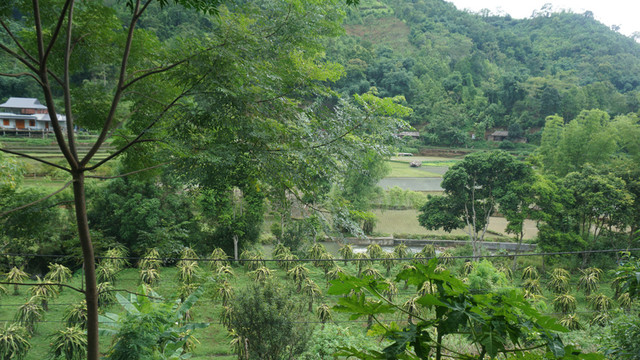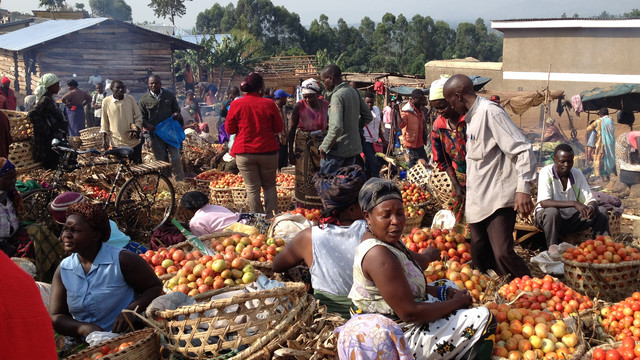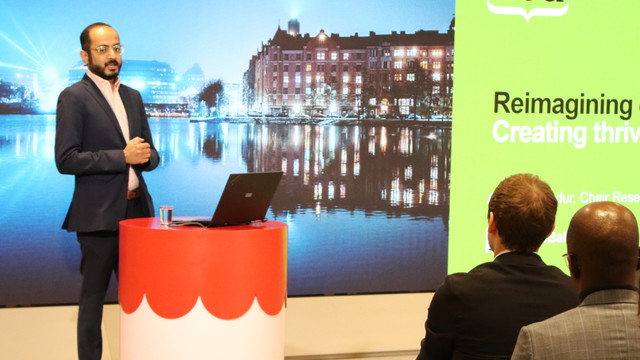Finance for inclusive investment in climate resilient development
Inclusive investment that allows the poorest to invest in climate-resilient development requires practical solutions, and the Addis Ababa Action Agenda points the way, says Nanki Kaur.


The Asian Development Bank is helping herders in Mongolia combat the consequences of climate change by training them to cultivate fodder or animal feed that is more resilient towards extreme weather changes, using plants that are adapted to the area (Photo: Asian Development Bank, Creative Commons, via Flickr)
The Addis Ababa Action Agenda (AAAA) agreed at the Third International Conference on Financing for Development could drive the kind of solutions that we desperately need to ensure inclusive investment in climate-resilient development (CRD).
I see this outcome as potentially transformational – solutions are already out there to help us move to a new development era.
What is needed?
Policymakers need to facilitate the delivery of accessible, scaled-up and long-term finance to support inclusive investment that allows the poorest to invest in climate-resilient development.
This is not easy. Current flows of climate finance are dominated by short-term sources of private finance, which is mostly invested in the country of origin with the aim of securing a return on investment. As such, many of the least developed countries and poor and small-scale investors within these countries lack access to both scaled-up and long-term finance for CRD.
IIED has identified four ways in which policymakers can design their financial landscape to finance inclusive investment in CRD (as presented at the UNECA event on transformative financing in Addis):
- Use financial intermediaries that have a mandate and the capacity to access and deliver finance for inclusive investment in CRD: Kenya has established a County Adaptation Fund (PDF) to deliver finance for investment in local adaptation priorities.
In Rwanda the national climate change fund, FONERWA, works with the national development bank to deliver finance to small and medium sized enterprises (SMEs) to invest in CRD. The Development Bank of Ethiopia provides finance to start-up private sector enterprises to invest in renewable energy, and works with micro finance institutions to deliver finance to rural households to invest in renewables
- Deploy financial instruments sequentially to enable the poorest to access finance and scale-up investment in CRD. In Rwanda those who have greatest need can access grants, guarantees and insurance to support early stages of investment in CRD, with loans, equity and debt available for the later stages of investment in CRD
- Use financial planning systems to allocate and manage finance for inclusive investment in CRD: Bangladesh uses its fiscal policy to mobilise and allocate financial resources for inclusive investment in CRD. Nepal, Ethiopia and Rwanda use public finance management systems to allocate and manage finance.
The Development Bank of Ethiopia's renewable energy investment draws on its credit policy and risk management systems to target finance. For instance, the bank's provision for group collateral enables households to access finance for investment, and
- Use incentives to finance inclusive investment in CRD: policy, economic, capacity, and technology-based incentives can play an important role in mobilising and delivering finance for inclusive investment in CRD. Ethiopia's climate-resilient green economy strategy provides policy direction for investment in inclusive CRD. The Development Bank of Ethiopia promotes investment in low cost and locally procured technologies to encourage poor households and small and medium-sized enterprises (SMEs) to invest in renewable energy.
Identifying solutions in the Addis agreement
The AAAA aims to address inter and intra-country dimensions of poverty and vulnerability, providing a solid framework for supporting inclusive investment in CRD.
It seeks to target financial resources at least developed countries and to poor and vulnerable sections within these countries, including women, SMEs and the informal economy. It prioritises investment in pro-poor sectors – including investment in social protection, public services, sustainable and resilient infrastructure and inclusive industrialisation.
As such, it provides a comprehensive set of solutions, focusing on all elements of the financial landscape to finance inclusive investment in CRD.
- Sources of finance: the AAAA broadens the scope of resource mobilisation strategies by focusing on domestic and international resource mobilisation, including north-south and south-south flows of finance
- Financial intermediaries: the agreement encourages the use of national development banks and local government bodies that are better able to deliver finance for inclusive investment in CRD
- Financial instruments: these are encouraged, with grants and insurance-based instruments promoted as a way to support investment in CRD by poor households. Guarantees backed by the Multilateral Investment Guarantee Agency, public private partnership instruments and blended finance instruments are promoted to support private sector investment in LDCs
- Financial planning systems: the agreement promotes targeted and efficient resource flows for inclusive investment in CRD, encouraging the use of public finance management systems to target and effectively manage finance for investment in public goods. It encourages development banks to use environmental and social safeguards to target inclusive investment in CRD. It encourages the use of financial risk management strategies like collateral substitutes to enable poor household's access to finance – and the use of portfolio approaches to encourage public and private investment in CRD, and
- Incentives: the agreement identifies a range of incentives to finance inclusive investment in CRD. These include: cooperation on international tax to support domestic resource mobilisation; policy and regulatory incentives to align private sector interests with public goals and to ensure financial inclusion; financial initiatives to work with new financial actors such as the Asian Infrastructure Bank; and peer learning and experience sharing platforms such as the Alliance for Financial Inclusion to develop investor confidence in CRD investments.
Transforming the financial landscape
As such, it provides a solid framework for transforming the financial landscape in support of inclusive investment in climate-resilient development, with a clear narrative on why inclusive investment in CRD is important and a comprehensive set of solutions to finance investment in this area.
It focuses on mobilising scaled-up and long-term sources of finance by complementing existing sources of international aid with south-south sources of public and private finance and domestic revenue.
And it focuses on the entire financial landscape to ensure that poor and vulnerable sections of society have access to appropriate financial intermediaries, instruments, financial planning systems and incentives to access finance and scale-up investment in CRD.
The AAAA points the way on how to mobilise and deliver finance for inclusive investment in a new development era.
Nanki Kaur (nanki.kaur@iied.org) is principal researcher in IIED's Climate Change Group.



